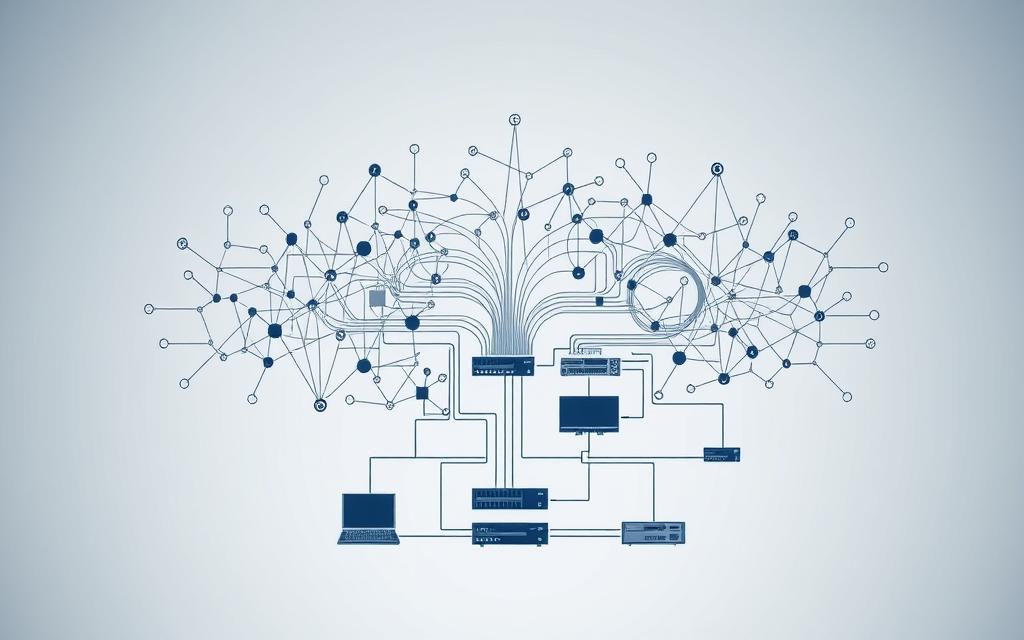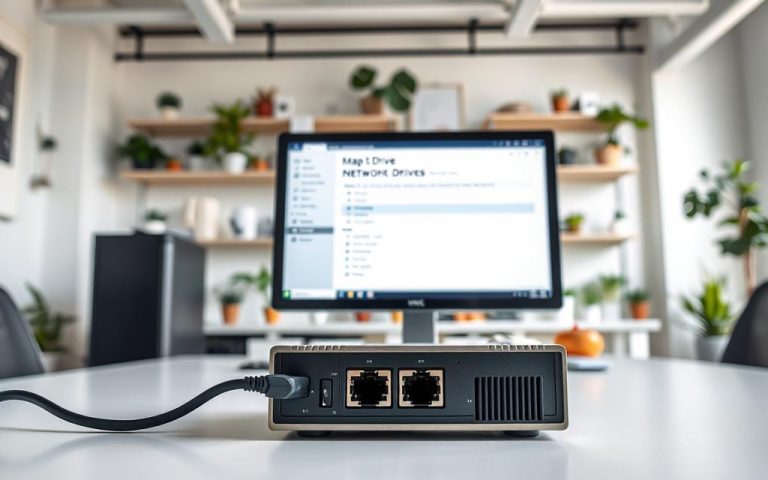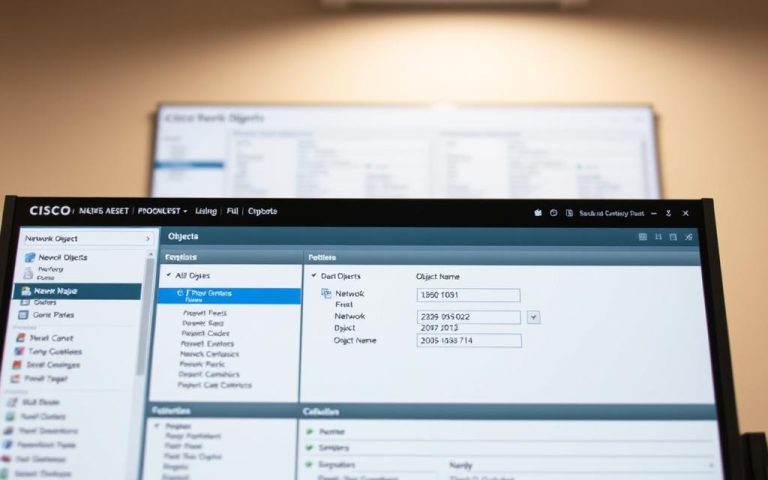What Is a Communication Network? – Key Concepts Explained
Modern businesses and individuals rely on systems that connect devices for seamless data exchange. These frameworks, built on standardized protocols, enable real-time collaboration across locations. From early ARPANET experiments to today’s 5G infrastructures, these technologies have transformed how we share information.
The core function involves transmitting data between computers, servers, and IoT equipment. Layered architectures like the OSI model organize this process into manageable stages—from physical cables to application-level interactions. This structure ensures reliable performance while addressing challenges like latency and security risks.
Applications span cloud computing, IoT deployments, and distributed databases. However, maintaining hardware reliability and preventing breaches remain critical concerns. As enterprises adopt Data Lakehouse models, efficient network designs become even more vital for processing large datasets.
What Is a Communication Network in Computer?
Global connectivity thrives through interconnected systems transmitting data across devices. These frameworks rely on standardized protocols to ensure seamless interactions between nodes, from smartphones to cloud servers.
https://www.youtube.com/watch?v=TgMWatXUgsg
Defining the Basics
A network links devices using rules like TCP/IP. Each node—whether a laptop or IoT sensor—has a unique identifier (IP/MAC address) for accurate data transfer.
Modern designs contrast sharply with 1960s mainframes. Today’s decentralized models improve scalability and fault tolerance. For example, cloud platforms like Google Drive allow real-time collaboration across continents.
Historical Evolution
ARPANET, launched in 1969, pioneered packet switching. This replaced slower message-switching systems, breaking information into smaller chunks for faster transmission.
By the 1980s, TCP/IP became the universal standard. Costs plummeted from $300/megabyte to under $0.0000005, enabling global adoption. Wireless technologies like 5G now push speeds beyond 10 Gbps.
| Era | Milestone | Impact |
|---|---|---|
| 1960s | ARPANET | First packet-switched network |
| 1983 | TCP/IP Adoption | Unified global protocols |
| 2020s | 5G Rollout | Ultra-low latency data transfer |
Today, 5.3 billion users leverage these systems daily. Urban traffic monitors and telehealth services exemplify their transformative role.
Key Components of a Communication Network
Every efficient digital framework relies on specific hardware and pathways to move information. These elements work together to ensure smooth data flow across various nodes and links.
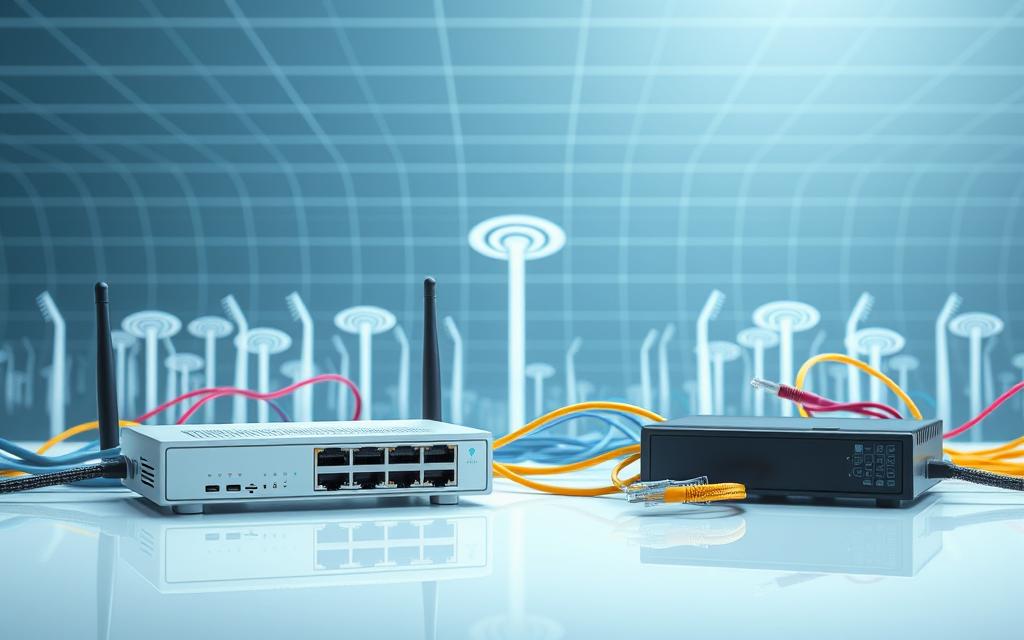
Network Devices and Nodes
Endpoints like smartphones and laptops make up 71% of all nodes, handling user interactions. Servers (18%) and routers (11%) form the backbone, directing traffic efficiently.
Modern setups separate edge devices from core infrastructure. This design boosts performance while maintaining security. For example, smart thermostats connect to cloud platforms through gateway routers.
Transmission Media: Wired vs. Wireless
Copper cables still serve many setups, with CAT6A supporting 10Gbps over 100 meters. However, fiber optics now dominate high-speed transmission, delivering 400Gbps across 150 meters.
Wireless technologies offer flexibility through different frequency bands:
- 2.4GHz provides wider coverage
- 5GHz delivers faster speeds
- 6GHz reduces interference
Emerging options like Li-Fi promise 224Gbps using light waves. Meanwhile, advanced routing equipment manages these diverse connections seamlessly.
Satellite links face latency hurdles (550ms) compared to terrestrial options (4ms). Yet, they remain vital for remote access where cables can’t reach.
How Communication Networks Work
Data moves seamlessly across digital frameworks through structured processes. These systems rely on layered protocols to ensure accurate delivery from sender to receiver.
Establishing Connections
The TCP three-way handshake (SYN, SYN-ACK, ACK) verifies endpoint readiness. Wired setups achieve 0.1% packet loss, while wireless averages 2.7% due to interference.
Data Encapsulation Steps
Information undergoes transformation at each OSI layer:
- Application: Creates segments with payload data
- Transport: Adds port numbers (TCP/UDP headers)
- Network: Attaches IP addresses for routing
| Congestion Control Method | Key Feature | Best For |
|---|---|---|
| TCP Reno | Aggressive recovery after loss | General web traffic |
| TCP Vegas | Predicts congestion preemptively | Low-latency applications |
Address Resolution & Prioritization
ARP tables map IPs to MAC addresses, enabling local transfer between nodes. QoS tags (DSCP values 0–63) prioritize critical traffic like VoIP calls.
Software-defined networking (SDN) separates control and data planes, centralizing management. This aligns with modern communication protocols for scalable deployments.
Time-sensitive networking (TSN) guarantees microsecond precision for industrial robots. Meanwhile, CDNs cache content at edge servers to reduce latency for global users.
Types of Communication Networks
Digital frameworks vary in scale and purpose, serving distinct organizational needs. Enterprises choose configurations based on geographic coverage, performance requirements, and data volumes. The $78.4 billion LAN equipment market reflects strong demand for localized systems, while 65% of businesses now use SD-WAN for distributed operations.
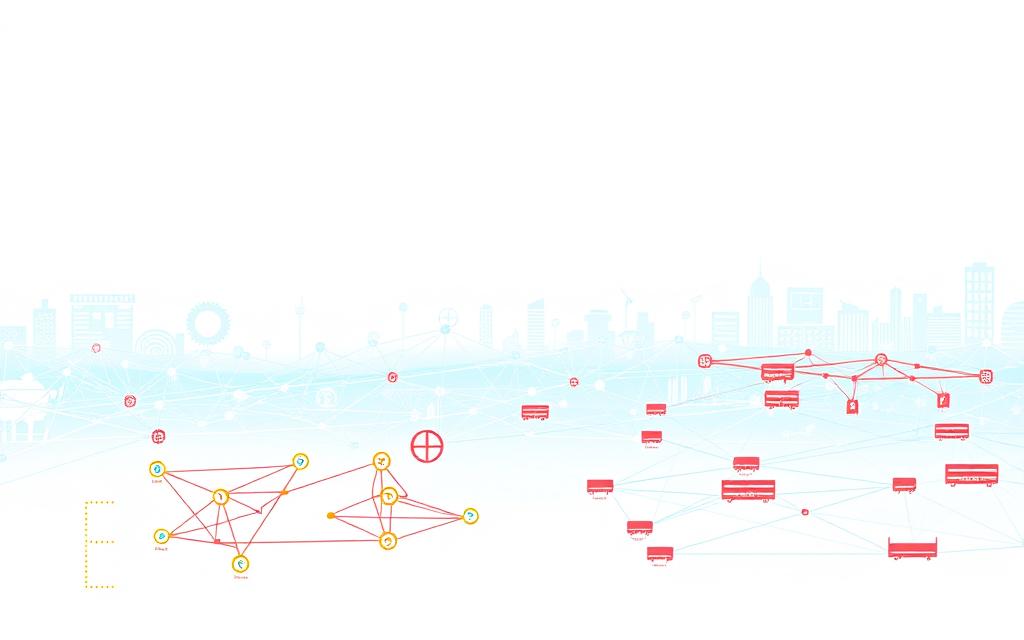
Local Area Network (LAN)
Office environments typically deploy Ethernet or Wi-Fi 6E infrastructure. Traditional cables deliver consistent 10Gbps speeds, while wireless access supports 120 devices per access point. Industrial settings increasingly adopt private 5G, achieving 1ms latency for robotics.
Key comparisons:
- Ethernet: 99.99% uptime, fixed access points
- Wi-Fi 6E: 3.6Gbps peak speeds, flexible deployment
- Private 5G: Ultra-reliable for manufacturing floors
Wide Area Network (WAN)
Global enterprises leverage optimized cloud connections with 90% compression efficiency. MPLS circuits cost $300/Mbps but guarantee performance, while Internet VPNs reduce expenses by 60%. Facebook’s B4 fabric handles 100Tbps across data centers.
Traffic management techniques:
- Packet deduplication (40% bandwidth savings)
- TCP acceleration (3x throughput gains)
- Edge caching (75% latency reduction)
Metropolitan Area Network (MAN)
Smart cities deploy fiber-optic infrastructure connecting traffic cameras, utility meters, and emergency systems. These mid-range networks span 50km with 100Gbps capacity, enabling real-time data analysis. Barcelona’s deployment reduced emergency response times by 35%.
Emerging MAN applications:
- Distributed energy grid monitoring
- Autonomous vehicle coordination
- AR-assisted maintenance crews
These types of digital frameworks continue evolving, with edge computing reshaping WAN traffic patterns and 6GHz wireless enhancing LAN capabilities.
Network Topologies Explained
Digital frameworks rely on specific connection patterns to optimize performance and reliability. These arrangements, known as network topologies, determine how nodes interact and share resources. Enterprises select designs based on cost, scalability, and fault tolerance needs.
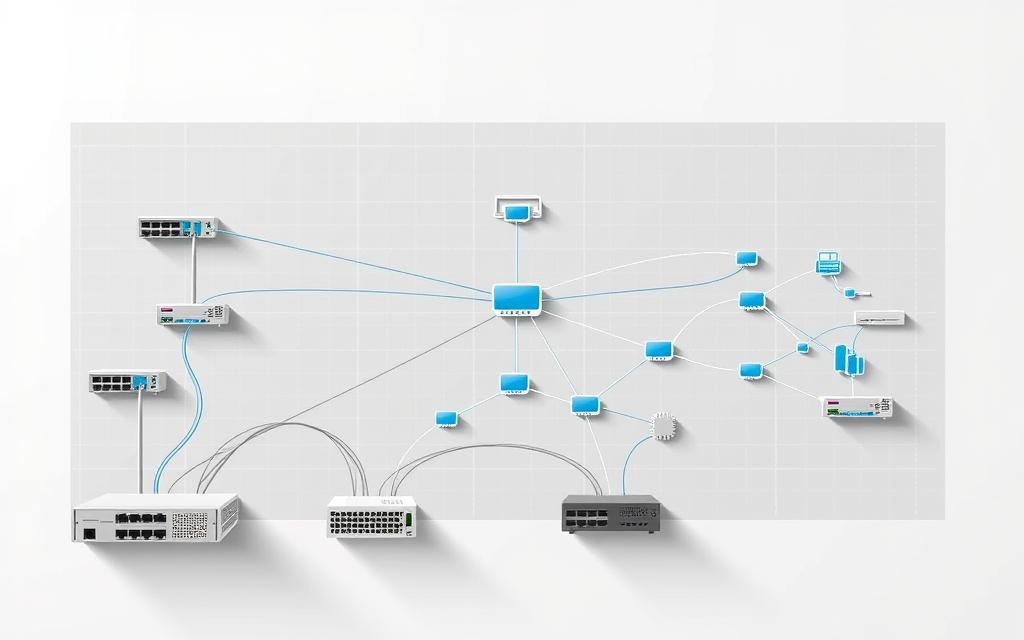
Star Topology
Centralized systems dominate modern offices, with 83% using star configurations. All nodes connect to a single hub, simplifying management. However, failure at the central point disrupts entire operations.
Key advantages include:
- Easy troubleshooting and upgrades
- Minimal cable requirements
- Scalable for growing teams
Mesh Topology
Decentralized designs offer multiple pathways between nodes. Full mesh requires n(n-1)/2 connections, ensuring maximum redundancy. This setup excels in critical environments like emergency services.
Performance comparisons:
| Type | Failure Rate | Throughput |
|---|---|---|
| Star | High (single point) | 1Gbps typical |
| Mesh | Low (multiple paths) | 100Gbps possible |
Bus and Ring Topologies
Legacy systems often used bus designs with shared backbone cables. Modern spine-leaf architectures replaced these, boosting speeds from 10Mbps to 100Gbps.
Ring configurations feature:
- Circular data flow
- Self-healing protocols (SONET/SDH)
- APS switching under 50ms
Emerging trends include blockchain-based mesh implementations and quantum network topology research. Wireless options like 802.11s compete with Zigbee for IoT deployments.
Communication Protocols and Standards
Protocols serve as the universal language for device communication. These standards ensure seamless data exchange across diverse hardware and software environments. HTTP/3 now powers 38% of top websites, leveraging QUIC for 30% faster connections.

The OSI model organizes protocols into seven functional layers. Application-level rules like HTTP handle user interactions, while TCP/IP manages transmission reliability. Industrial environments use specialized options like PROFINET (1ms cycle times) for machine control.
IPv6 adoption faces hurdles despite its 128-bit address space. Only 43% of systems have migrated, partly due to legacy hardware constraints. Meanwhile, TLS 1.3 reduces handshake latency by 40% compared to TLS 1.2, enhancing security.
5G New Radio introduces radical physical layer changes:
- Flexible subcarrier spacing (15kHz-240kHz)
- Beamforming for targeted signal transmission
- Millimeter wave support (24GHz-100GHz)
The Matter protocol unifies smart home devices across brands. Its IP-based design eliminates proprietary hubs, while post-quantum cryptography standards (NIST PQC project) prepare for future threats.
The Role of TCP/IP in Modern Networks
The digital backbone of global connectivity depends on standardized rules for efficient operations. TCP/IP handles 95% of internet traffic, making it the universal language for data transfer between devices. Its four-layer model simplifies complex interactions compared to the OSI framework’s seven layers.
- Application layer: Combines OSI’s top three layers for streamlined protocols
- Transport layer: Uses TCP for reliable delivery with 20-60 byte overhead
- Internet layer: Manages IP routing and path MTU discovery
Modern systems employ MSS clamping to prevent fragmentation. This technique adjusts maximum segment sizes dynamically, optimizing performance across diverse network paths.
Congestion control algorithms significantly impact throughput:
| Algorithm | Advantage | Use Case |
|---|---|---|
| BBR | 40% higher bandwidth | Video streaming |
| Reno | Stable recovery | General web |
TCP Fast Open (TFO) reduces handshake latency by 30%, while QUIC faces firewall compatibility hurdles. Carrier-grade NAT now mitigates IPv4 exhaustion for 72% of ISPs.
Emerging alternatives like SCION architecture promise:
- Enhanced routing security
- Multi-path data transfer
- Decentralized trust models
These innovations address growing demands as global internet traffic surpasses 4.8 zettabytes annually. The TCP/IP suite continues evolving to maintain its foundational role in digital systems.
Wireless vs. Wired Networks
Organizations face critical decisions when choosing between wireless and wired solutions for their infrastructure. Enterprise wireless deployments grew 41% YoY, while Cat 8 cabling supports 40Gbps speeds up to 30 meters.
Performance varies significantly between these technologies. Wi-Fi 7’s 320MHz channels enable 30Gbps throughput, whereas wired multi-gigabit Ethernet delivers consistent 0.2ms latency—10x faster than wireless averages.
| Metric | Wired | Wireless |
|---|---|---|
| Latency | 0.2ms | 2-5ms |
| Max Speed | 40Gbps (Cat 8) | 30Gbps (Wi-Fi 7) |
| Error Recovery | FEC mechanisms | Hybrid ARQ (5G) |
Fiber to the office (FTTO) is emerging, combining fiber optics’ reliability with PoE++ power delivery. This contrasts with wireless power systems that limit placement flexibility.
Security differs too. Wired setups control access via physical ports, while wireless signals risk RF leakage. Enterprises often deploy hybrid architectures to balance speed and protection.
Network Security Essentials
Protecting digital assets demands robust defenses against evolving cyber threats. Over half of enterprises now implement zero-trust models, verifying every access request regardless of origin. This shift reflects growing concerns over data breaches, which cost businesses $4.45 million on average per incident.
Encryption and Firewalls
AES-256 encryption remains the gold standard, processing 1.5GB/s per core versus ChaCha20’s 2.1GB/s. Next-gen firewalls add application-layer inspection, blocking 99.9% of malware attempts. Cisco Secure Firewall exemplifies this with unified workload visibility across cloud and on-premises systems.
Quantum-resistant algorithms like CRYSTALS-Kyber will soon replace current standards. NIST finalized these post-quantum protocols in 2024 to counter future decryption threats.
VPNs and Secure Access
WireGuard VPNs use 15% less overhead than IPsec while maintaining security. TLS 1.3 enhances protection with 1-RTT handshakes, reducing session latency by 40%. Enterprises increasingly adopt SASE architectures combining:
- Cloud-native virtual private gateways
- Zero-trust access policies
- Hardware security modules for PKI
HSMs safeguard cryptographic keys in tamper-proof hardware, while migration tools help transition VPNs to quantum-safe algorithms. These layers form a comprehensive defense for modern network infrastructures.
Performance Factors in Communication Networks
Optimizing digital interactions requires understanding critical performance metrics. Over two-thirds of issues originate at the application level, making latency and synchronization vital for seamless operations.
Real-time applications demand precision. Jitter buffers in VoIP systems compensate for 15-30ms variations, while Precision Time Protocol (PTP) achieves microsecond accuracy—50x better than NTP.
Data transmission relies on advanced hardware. RDMA cuts latency to 1.5μs in high-performance setups. Smart NICs offload tasks like encryption, boosting throughput by 40%.
- Failover speed: HSRP recovers in 3 seconds vs. VRRP’s 5 seconds
- Programmable planes: P4 reduces processing delays by 60%
- RoCEv2: Delivers 25Gbps with 80% lower CPU usage than TCP
Network calculus predicts worst-case latency, essential for industrial automation. Fiber links minimize propagation delays, ensuring 99.999% uptime for mission-critical systems.
Business Applications of Communication Networks
Corporate productivity now hinges on advanced data exchange solutions. SD-WAN deployments reduced branch OPEX by 39%, proving their value for distributed enterprises. These systems intelligently route traffic across multiple connections, optimizing cloud application performance.
- SaaS architectures deliver applications with 99.95% uptime
- Blockchain networks track shipments with tamper-proof accuracy
- AR collaboration platforms require
Multi-cloud environments demand specialized solutions. Network slicing allocates dedicated resources for vertical industries—healthcare gets priority bandwidth for telehealth, while manufacturing secures ultra-reliable IoT connections.
“Intent-based networking reduced configuration errors by 73% in our global deployments,” reports a Fortune 500 CIO.
AIOps tools slash MTTR by 58% through automated anomaly detection. This aligns with the 89% of enterprises using network APIs for operational automation. Secure access service edges (SASE) combine SD-WAN with zero-trust security, creating unified business platforms.
Key performance metrics:
| Application | Requirement | Solution |
|---|---|---|
| Video conferencing | 1.5Mbps/user | QoS prioritization |
| ERP systems | Edge computing |
These advancements demonstrate how modern business needs drive network innovation. From AI-powered troubleshooting to 5G-enabled field service, connectivity solutions become strategic differentiators.
Future Trends in Network Communication
Emerging innovations are reshaping how digital ecosystems exchange information. 6G research aims for 1Tbps speeds by 2030, leveraging terahertz frequencies above 100GHz. This requires breakthroughs in signal penetration and power efficiency.
Quantum technologies achieve new milestones, with 100km entangled particle systems enabling hack-proof data transfer. Photonic circuits reduce latency to nanoseconds, crucial for financial trading and autonomous vehicles.
Key advancements transforming network infrastructure:
- Terahertz bands: Offer 100x more spectrum but face atmospheric absorption challenges
- Neuromorphic chips: Process traffic patterns like human brains, reducing energy use to 1μJ/bit
- Semantic routing: Understands content meaning, not just IP addresses
| Technology | Potential Impact | Deployment Timeline |
|---|---|---|
| AI Congestion Prediction | 40% fewer bottlenecks | 2026-2028 |
| Holographic Comm | 3D collaboration spaces | 2030+ |
Cloud-edge hybrids will dominate, with 80% of processing occurring closer to users. These solutions cut time delays while meeting strict energy level targets. Standards bodies already draft protocols for post-quantum security.
As these technologies mature, they’ll redefine global connectivity. The race to commercialize them could determine the next decade’s tech leaders.
Conclusion
Modern data exchange relies on robust architectures, from ARPANET’s inception to today’s AI-driven systems. Security remains non-negotiable, with zero-trust models and quantum-resistant encryption becoming standard.
The fusion of compute, storage, and network resources accelerates digital transformation. Businesses leveraging SD-WAN and edge solutions gain competitive advantages through agile operations.
Prioritize AI-enhanced management tools for real-time performance optimization. Assess infrastructure readiness for emerging technologies like 6G and post-quantum protocols.
Proactive planning ensures devices and frameworks meet future demands. Start evaluating your setup today to stay ahead in an interconnected world.
FAQ
How do communication networks differ from traditional data transfer methods?
Unlike older point-to-point connections, modern networks use protocols like TCP/IP to enable multiple devices to exchange data efficiently. This allows simultaneous transmission across nodes, improving speed and reliability.
What are the main differences between LAN and WAN setups?
LANs cover small areas like offices using Ethernet or Wi-Fi, while WANs connect geographically dispersed locations through leased lines or VPNs. WANs typically have higher latency due to longer distances.
Why is network topology important for system performance?
Topology determines how data flows between nodes. Star configurations centralize traffic through hubs, while mesh networks provide redundant paths. The right layout minimizes congestion and maximizes uptime.
How do firewalls and VPNs enhance security?
Firewalls filter unauthorized access attempts, while VPNs encrypt transmissions over public networks. Together, they protect sensitive business data from interception or breaches.
What role does cloud computing play in modern networks?
Cloud platforms like AWS or Azure extend network capabilities without physical infrastructure. They provide scalable resources, remote access, and integrated security services.
How are 5G and IoT changing communication networks?
5G enables faster wireless speeds for IoT devices, supporting real-time data exchange. This drives smart cities, industrial automation, and edge computing solutions.
What factors affect network performance metrics?
Bandwidth, latency, and packet loss impact speed. Quality of Service (QoS) protocols prioritize critical traffic, while proper cabling and router configurations optimize throughput.

